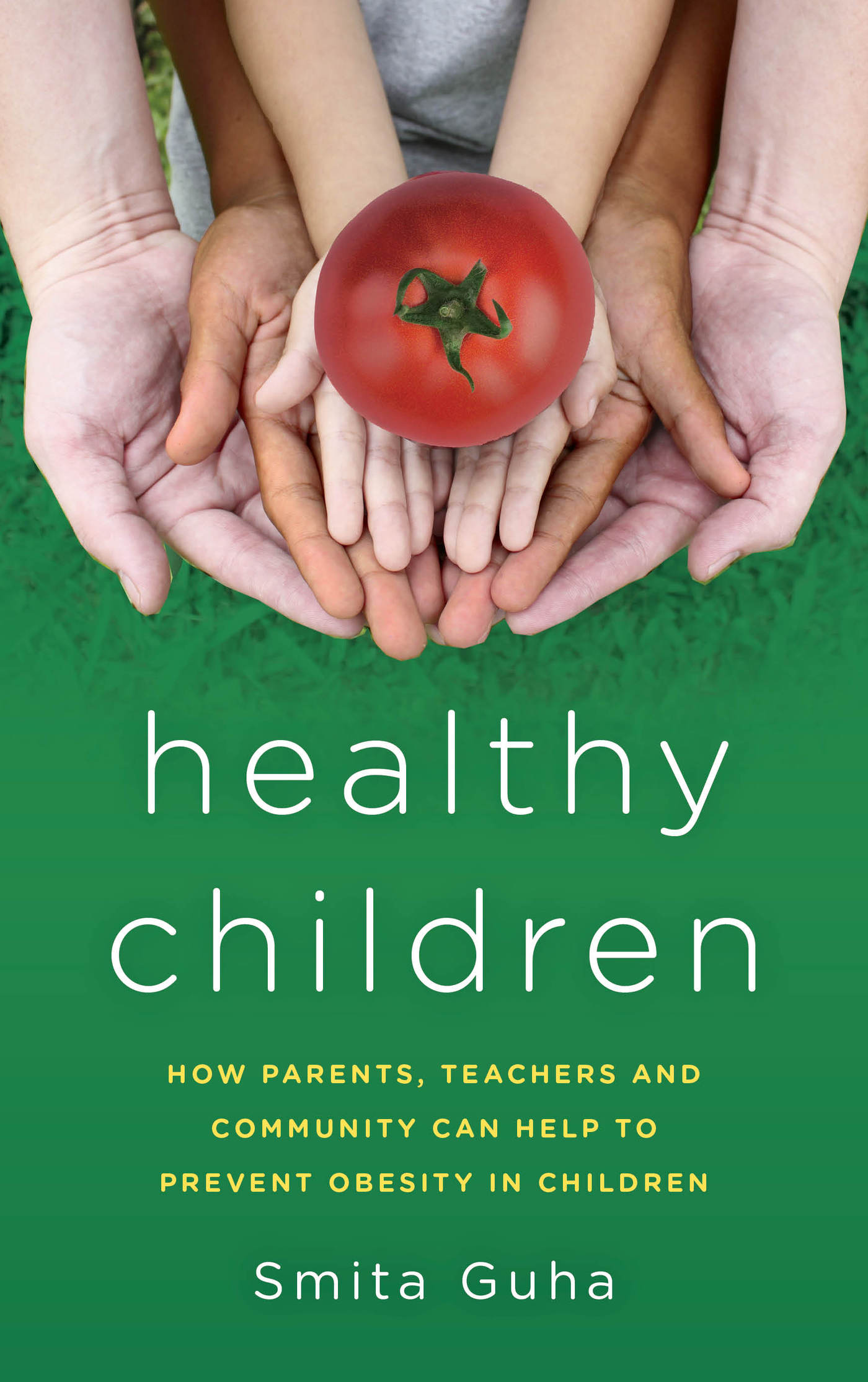Healthy Children
Healthy Children
How Parents, Teachers,
and Community Can Help to Prevent Obesity in Children
Smita Guha
ROWMAN & LITTLEFIELD
Lanham Boulder New York London
Published by Rowman & Littlefield
A wholly owned subsidiary of The Rowman & Littlefield Publishing Group, Inc.
4501 Forbes Boulevard, Suite 200, Lanham, Maryland 20706
www.rowman.com
Unit A, Whitacre Mews, 26-34 Stannary Street, London SE11 4AB
Copyright 2018 by Smita Guha
All rights reserved. No part of this book may be reproduced in any form or by any electronic or mechanical means, including information storage and retrieval systems, without written permission from the publisher, except by a reviewer who may quote passages in a review.
British Library Cataloguing in Publication Information Available
Library of Congress Cataloging-in-Publication Data Available
ISBN: 978-1-4758-2665-4 (cloth: alk. paper)
ISBN: 978-1-4758-2667-8 (electronic)
 TM The paper used in this publication meets the minimum requirements of American National Standard for Information SciencesPermanence of Paper for Printed Library Materials, ANSI/NISO Z39.48-1992.
TM The paper used in this publication meets the minimum requirements of American National Standard for Information SciencesPermanence of Paper for Printed Library Materials, ANSI/NISO Z39.48-1992.
Printed in the United States of America
This book is dedicated to all the children of the world.
Introduction
This book is geared toward educators, teachers, and parents of young children, especially children with health issues. It will be appropriate for scholars, professionals, and policy makers who are involved with children. A typical reader needs no technical background or expertise. I hope to reach a general audience, especially teachers, parents, and school administrators. Further, I hope to reach those in the student audience who are endeavoring to make a change in lifestyle.
Obesity among children is a national and international concern. The focus of the book is to provide evidence-based strategies to assist parents and educators to foster healthy weight gain in children and to empower children to be active agents of change in their own health behavior.
The book will contribute greatly to the literature in the field focusing on national and international concern about childhood obesity and, further, highlighting the problems with obesity prediabetes, type 2 diabetes, etc. Specifically, the book will provide research findings that children who are healthy do better cognitively, socially, emotionally, and, of course, physically. Leading a healthy life helps children live a higher quality of life.
The book will provide a model that can be implemented at home and in school. The model will encompass nutrition education for children. Music will be a significant part in this model that will encourage children to sing and dance to the beat. Dance is a form of exercise that will help children overcome weight issues. Music will be able to heal the children who are socially not accepted by their peers for their weight issues. Team sports and individual sports will be an integral part of the book. Adults involved in the lives of children will be able to follow the model from the book to help the children.
Chapter 1: Motivating and Engaging Children To Be Active Agents of Their Health Behavior
This chapter will focus on the following questions and issues: What constitutes health? Why is being healthy important for young children? What factors contribute to staying healthy among children? The chapter will provide a review of research literature in the field, sharing the preexisting models and theories in the field. The emphasis will be on how educators and parents can really effect change in the children they care for. The main focus of this chapter is how to empower children to be active agents of change.
Chapter 2: Expertss Opinions and
Nutrition Unit
This chapter will focus on developing positive approaches to nutrition education and diet among children through curricular integration. Input from experts such as pediatricians, scientists, dieticians, or nutritionists in the field is provided. This chapter will provide strategies and demonstrate possible ways that teachers can integrate nutritional models across curricula in English, math, science, and social studies.
Chapter 3: Importance of Physical Exercise
This chapter will focus on the importance of physical exercise at school, at home, and in the community. Sports, music, and dance will contribute to the aspect of physical exercise among children. Input from experts in the field will be provided. A model will be further developed that will effectively help children get their necessary exercise while having fun with their peers.
Chapter 4: Social and Emotional Challenges for Children with
Health Issues
In this chapter, social factors will be highlighted for children who have weight issues. Children with these health issues often suffer from lack of self-esteem, develop a stigma, and/or become victims of bullying. Effective strategies to reduce bullying and help the victim will be provided.
Chapter 5: The Roles of Family and School in Providing Nutrition Education
for Children
This chapter will focus on the role of the family, especially parents. This chapter will target the family in providing nutrition education for their children. Parents will be encouraged to help their children avoid a sedentary lifestyle, limit time for watching TV and also limit hours on video games and cell phones. Parents will also be educated on the importance of rest and sleep time for their children.
Chapter 6: Involvement of the Community in Promoting Healthy Development
for Children
This chapter encourages parents and teachers to be involved in the community in promoting overall healthy development for children. Parents learn about dance and sports programs in the community as well as types of food and restaurants in their neighborhood. The author provides strategies to build a partnership with families, schools, and leaders in the community such as medical doctors and community nurses to promote healthy activities for children.
The chapter helps adults focus on the kind of advertisements that have a negative impact on childrens decision-making processes with regard to making healthy choices.
Chapter 7: Strategies to Work Collaboratively to Prevent an
Obesity Epidemic
This last chapter provides strategies for collaboration among parents, educators, and community leaders for the benefit of children. If children are developing healthy habits, then an obesity epidemic can be prevented. The author suggests strategies as to how educators and parents really affect change in children by providing healthy role models to develop positive behaviors. The focus is on dyadic relationships. Overall healthy children will reflect healthy bodies, minds, and spirits.
Essential Needs
Almost 14 percent of American children over age six and 12 percent of adolescents are obese. This is more than double the rate thirty years ago. The impact of childhood obesity reaches beyond the individual family and society. However, the epidemic is continuously growing, gaining momentum with each new year.
Over the decades, approaches to obesity treatment and prevention focused on genetics, and explored diets and individual eating behaviors. The focus has since shifted to societal interventions. Although the debate continues over how much influence to assign to heredity and how much to cultural and environmental factors, most adult obesity is rooted in childhood. Current research indicates that a strongly integrated program is the most effective way to success in overcoming obesity.
Next page

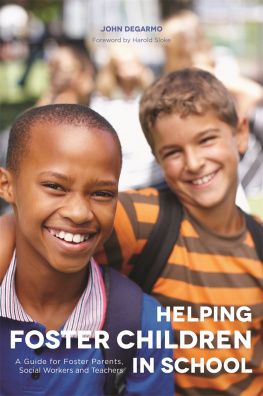
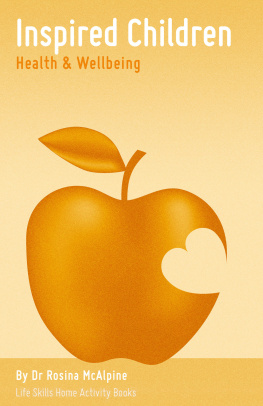
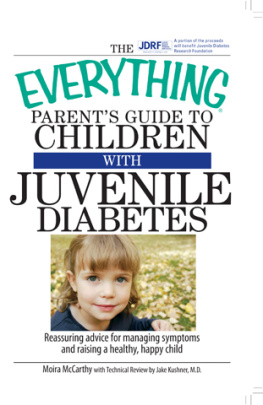

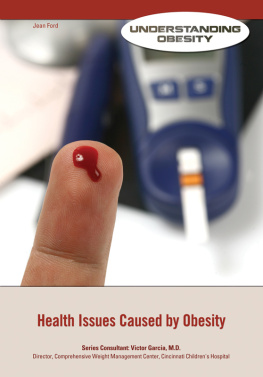
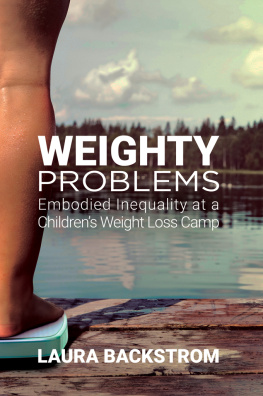
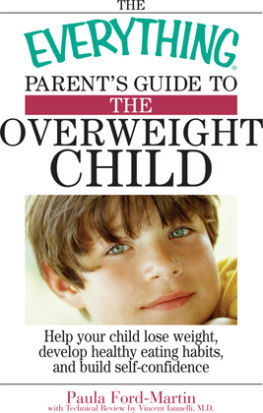


 TM The paper used in this publication meets the minimum requirements of American National Standard for Information SciencesPermanence of Paper for Printed Library Materials, ANSI/NISO Z39.48-1992.
TM The paper used in this publication meets the minimum requirements of American National Standard for Information SciencesPermanence of Paper for Printed Library Materials, ANSI/NISO Z39.48-1992.